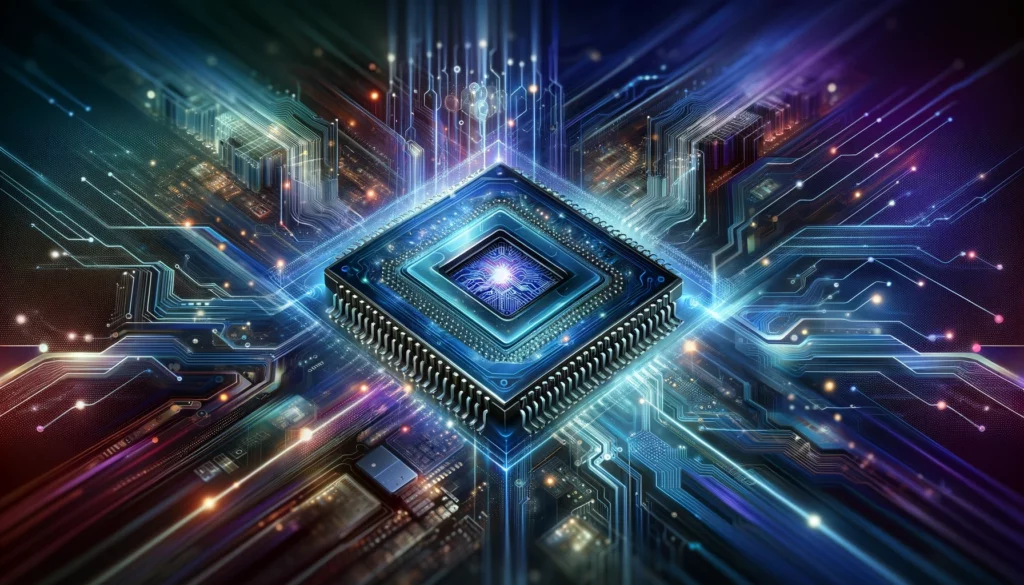AMD had a massive AI launch this week that showcased its three traditional market advantages and one new one. AMD has been a market darling of late, which is kind of amazing since AMD was traditionally viewed as more of a market challenger than a market leader. But its execution under CEO Lisa Su and CTO Mark Papermaster has been nothing short of amazing.
Let’s explore what makes AMD uniquely successful in this highly competitive market and what its new advantage is.
Customer Relationships
One of the big inefficiencies in the tech market traditionally is the lack of customer voice in product development. Steve Jobs basically thought customers were stupid and didn’t know what they wanted, which was often true, and they needed to be sold on the idea that Apple’s way was better. Microsoft’s Steve Ballmer would lament that he had to interface with so many customers with such different priorities he couldn’t figure out which priorities should become Microsoft’s (and Steve Ballmer was one of the smartest guys I’ve ever met).
One of the advantages of AMD’s model is that the number of major customers it has is relatively small compared to Apple or Microsoft. The other advantage is that it made listening to customers and responding to their needs a priority, and it has become an expert at it. Thus, when AMD brings a product to market, it gets solid support from major customers at a launch, and that was showcased this week when every major PC vendor and most major Cloud vendors, along with Microsoft, were on stage praising how AMD works with them.
Relationships are incredibly powerful when it comes to both getting new customers and retaining them, and AMD is a master at this.
Open
One of the things that large customers demand is open solutions. Like IBM and Microsoft, who have pivoted hard to open technology, AMD has become a huge advocate of this approach. This gives customers intimate knowledge of AMD’s offerings and makes it much easier for them to differentiate against competitors with more proprietary solutions. Proprietary is the way things used to be done, and some of AMD’s competitors haven’t successfully been able to pivot to the new model.
This also goes back to AMD’s first advantage, which is the ability to work closely with customers. AMD understands how important this open requirement is and is effectively using its own open approach to win business. Given how the folks on stage praised AMD’s open approach, I expect it’s the reason for many, if not most, of AMD’s recent design wins.
Hybrid AI
Post-ChatGPT, one of the biggest trends is the move to hybrid AI. This is where an AI process operates on both the client and the server, which reduces data center loading and latency to provide a better, faster, and cheaper solution for those attempting to deploy AI-based large language models (LLMs). AMD has AI technology for both servers and clients, which allows it to successfully argue it’s in better shape for this new hybrid AI approach than its competitors, which tend not to be as balanced between the two platform types.
AMD can argue that it’s better positioned for the hybrid AI world that’s coming, which gives it a significant advantage for those wanting to buy products strategically that better anticipate this hybrid AI future. It turns out an impressive number of buyers are thinking strategically and want this hybrid option to be part of their plan.
Wrapping Up: AMD’s New Secret Advantage
AMD has several market advantages. Top of the list is its customer engagement, open approach to the market, and ability to outperform competitors with respect to the future wave of hybrid AI offerings. But it has one more advantage: it uses AI internally. This provides significant acceleration for underdeveloped products, a faster time-to-market, and potentially higher quality than those that haven’t been deployed and don’t use AI as aggressively internally.
This use of AI should significantly improve AMD’s quality and speed-to-market and enhance customer relationships and loyalty, making its traditional advantage more powerful.
As AMD points out, its internal use of AI is increasingly responsible for its improved performance. It should not only result in better performance but become a showcase of how to get the greatest benefits from AI and make AMD even more successful.
AI is at the heart of AMD’s future success, and that success should fuel greater interest in AMD’s AI-focused products and create a unique circle of success. The next few years at AMD should highlight why AI can be a massive game changer for those deploying it properly.
- The HP OmniBook X Flip 2-in-1 16-Inch: Your New Digital Swiss Army Knife (Now in Glorious Atmospheric Blue) - June 25, 2025
- The Open AI Avalanche: Why AMD’s Collaborative Spirit Is Outmaneuvering NVIDIA’s Empire - June 22, 2025
- Lenovo Embraces OpenBMC: A Step Towards Greater Transparency and Control in the Data Center - June 17, 2025




Comments are closed.